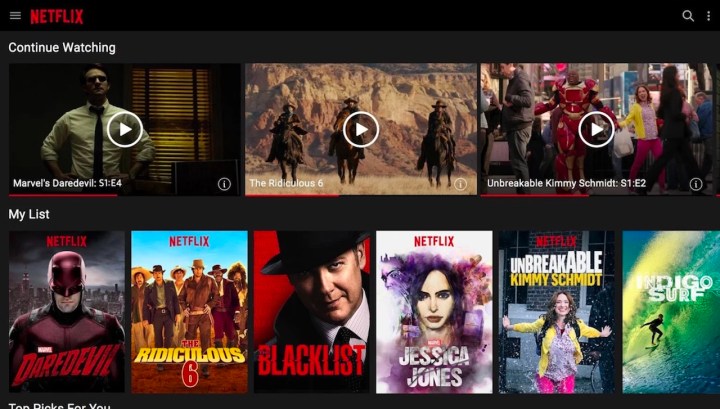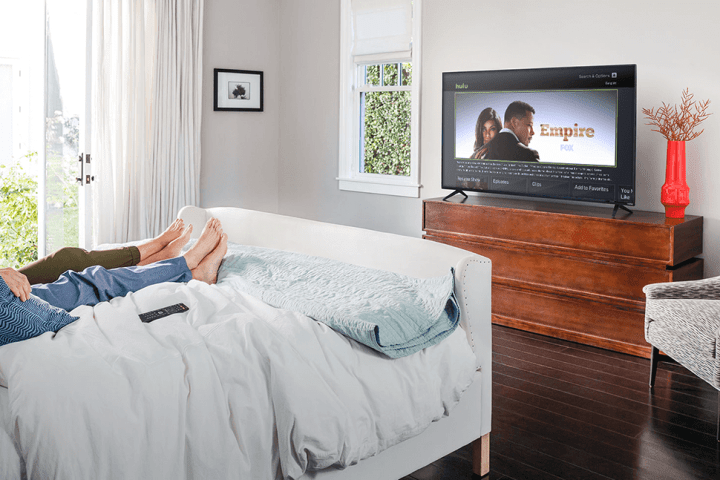Of the nearly countless on-demand streaming services out there, three stand out: Amazon Prime Video, Hulu, and Netflix. Unfortunately, choosing which one is worthy of your credit card information and time isn’t an easy task — and with a combined subscription fee that’s north of $40, subscribing to all three isn’t a viable option for most.
Even if you’re cutting the cord, the trio — merged with a channel-specific service such as CBS All Access or HBO and a live TV platform such as Sling TV — could add up to the same monthly cost as your traditional cable or satellite. So much for those cord-cutting savings, huh? That’s why it’s important to understand what you need from an on-demand streaming service. So, to help you find the best on-demand streamer for you, we’ve put together this comprehensive comparison guide.
Price
Amazon offers two main versions of its Prime subscription, either $119 annually or $13 per month (or $59 annually when you sign up with a valid student email address). Both versions net you the same perks, including two-day shipping — or free one-day shipping in some cases — discounted prices on select items, cloud storage, and, most importantly for our purposes, on-demand video (and music) streaming. The best part is that 4K Ultra HD content with HDR comes standard at no extra cost. Plus, you can share accounts with friends and family, so everyone can get in on the deals.
Netflix’s various subscription tiers currently range from $9 to $18 depending on your desired video quality — SD resolution is just $9 per month, but you can only stream on one device at a time. Moving up to HD will cost you $14 per month for two streams while moving up to 4K Ultra HD will now cost you $18 per month for four streams at a time. The prices will also go up should you add the DVD/Blu-ray rental service.
Hulu currently starts at just $7 for the ad-based service or $13 for the ad-free option (which we still highly recommend, even at nearly double the cost). Hulu’s options don’t stop there as it also offers a streaming live-TV package called Hulu+Live TV for $65 (increasing to $70 per month as of December 21, 2021), which is similar to Sling TV and YouTube TV. The subscription includes more than 75-plus channels on top of the service’s regular on-demand library, and there are also add-on features at an additional fee, including a $6 fee to get rid of most ads altogether. You’ll also get better savings with Hulu if you’re a Disney+ and ESPN+ subscriber, as the illustrious Disney Bundle saves you $6 on the streaming trio.
Especially for those who want to stream 4K at the lowest possible price, Amazon is the cheapest bet and has stated that the company won’t raise prices for 4K streaming. The sheer number of extra features and benefits included in Amazon Prime gives it an advantage over its competitors, as well. Throw in Amazon’s student discount, and this is an easy win.
Winner: Amazon
Content library

When it comes to sheer volume, it’s no contest: Amazon has the largest catalog of content by a wide margin. But quantity and quality are two very different things. Netflix blows the doors off the competition here, with the most popular movies and shows outside of HBO. It also boasts a large number of acclaimed international films (though its film collection, in general, has dwindled in recent years). You can find a list of our favorites here.
What you want to watch will largely dictate which service or combination of services is best for you. We’re giving the nod to Netflix here, however; it just has a more diverse and higher quality library. It might not be the best for keeping up with the latest TV shows from other networks, but that also isn’t what the service was designed for in the first place, and no matter how hard you try, you’ll never run out of shows to watch.
We could easily see Hulu or Amazon catch up here, but that largely depends on how much money either company is comfortable throwing at original content. Hulu has a leg-up thanks to its ownership by Disney, who could snap the finger and load it up with original content from all its properties, though the company doesn’t seem keen on cannibalizing its own-branded streaming service anytime soon. Likewise, Amazon also has big money backing it, but with Netflix having carved out a prominent slice among talent vying for its attention, that may not matter.
Winner: Netflix
Supported devices

All three services are available on a long list of devices — too long to list here.
Netflix is basically everywhere. Many devices even feature the Netflix logo directly on their remote. Hulu is also just about everywhere, often in the native user interface, too. And now that Amazon and Google have let bygones be bygones, Amazon Prime Video is virtually everywhere, too — showing up on Chromecast and Chromecast Ultra in July 2019.
Given the ubiquity of Netflix, Hulu, and now Amazon Prime Video, it’s close, but Netflix still beats out its rivals here — it’s even on many cable boxes, and some TV and Blu-Ray player makers will always reserve a button on their remotes for Netflix. If you’re not sure, it pays to do some research before committing. The full lists of compatible devices for each service are available here: Netflix, Hulu, Amazon Prime.
Winner: Netflix
Interface and ease of use

Netflix has great functionality, and it’s relatively easy to find what you want since it curates suggested movies and TV shows through a personalized “top picks” category on the home screen and offers a slick design with intuitive carousels. That said, over the years the company has changed its algorithm, dropping 5-star ratings for a thumbs-up system, and in the process, it seems to find a way to push its content above all others. On the other hand, we love the fact that its interface is universal regardless of device or brand, including HDTVs, gaming consoles, Rokus, and Blu-ray players, so you won’t have to learn to use a new interface.
Hulu has been updating its interface, and it’s a lot easier to use these days on most platforms than previously, with categories like Keep Watching, TV, Movies, and Kids that make it pretty simple to navigate. You can also add on premium channels like HBO, and shows and movies from those channels will show up on your main interface — though it can be a bit of a pain to access the apps themselves. For its quick interface and ability to incorporate premium channels, we’re going to designate Hulu (for the first time) as the winner here. Congrats, Hulu.
Amazon comes in last, with a more scattered interface, but like its rivals, it is constantly improving. One point in its favor is that you can browse Prime Video directly on the Amazon webpage and its various apps, and it also works great with Amazon’s Fire TV streaming devices. For instance, on Fire TV devices and the Echo Show, Alexa can surface your desired film or show by responding to your voice. However, these interfaces tend to differ from one device to another, and frankly, some aren’t as intuitive as others.
Winner: Hulu
Audio and video quality

In addition to offering 1080p streams, Amazon Prime Video, Hulu (as of July 2019), and Netflix all offer 4K Ultra HD resolution and HDR streaming support. Netflix charges extra for the privilege, bumping the monthly subscription fee to a whopping $16, while Amazon and Hulu provide 4K in their base cost. For the moment, only Amazon supports HDR10+, the only real competitor to the Netflix-favored Dolby Vision.
As for audio quality, Amazon offers surround sound content including Dolby Atmos. Netflix offers select titles in Dolby Atmos too, in addition to 5.1 and 7.1 surround sound encoding on select content. Hulu supports standard 2.0 stereo audio on most content and 5.1 surround sound on select others, though you’ll need a compatible device. You can check out all the latest supported platforms at Hulu.
A recent update to Netflix resulted in an upgrade to all users with a compatible 5.1 setup — even if it’s just your TV. Netflix claims this boost is equivalent to “studio quality” sound, but it’s not quite that simple. It also doesn’t change the fact that Netflix charges extra for access to Atmos content. Still, this boost puts some serious pressure on Amazon and Hulu.
Since Amazon offers 4K, HDR, and Dolby Atmos support all at no extra charge, Bezos and co. take the win here — but Netflix seems to be closing in.
Winner: Amazon
Release date for new content

If you must watch the latest episode of your favorite network show right after it airs, you need Hulu. New episodes usually appear on the service the day after airing (provided the show is carried by Hulu in the first place), and nearly all of that content is available commercial-free on Hulu’s pricier plan.
If you’re not willing to move up to the premium tier ($12 per month compared to the standard $6 fee), the commercials can really get in the way of Hulu’s greatness. Users who don’t move up will have to watch a stream of ads, the number of which has only grown as the service has expanded. To compound the issue, many of the ads are tied to a single series, which means binge-watchers will see the same commercials over and over again.
As mentioned previously, Hulu has live TV available at $55 per month, which includes live sports and news if you’re willing to pay, while Amazon has “Channels,” which allows you to add select channels with newer content. Of course, if you don’t pay for Channels on Amazon (which are pricey to add on at $10 or more), you can purchase the latest episodes, but you’ll end up paying a massive premium that makes it all but prohibitive ($2 to $3 per episode for SD, $3 to $4 for HD, or $40 or more for a “season pass”). The upside here is that you keep those movies and shows even after your Amazon Prime membership expires.
On the flip side, Netflix’s ad-free service doesn’t add the latest season of a show until after the new season begins. That time frame ranges from three months up to an entire year based on the agreement between Netflix and the show creators. For serious cord-cutters who want to stream the latest series, Hulu is the only way to go.
Winner: Hulu
Original content

As mentioned above, Netflix made serious moves (and spent crazy money) to easily take the win here. Once House of Cards started winning Emmys, Netflix hit the throttle, and the network/streaming service/movie studio hasn’t looked back. Once a fledgling creator with a few small series, Netflix has since amassed thousands of hours of original content from multiple countries, including dozens of shows of all flavors, as well as original feature films (including a 2019 Oscar nominee in Roma).
Netflix has been the most successful at drawing interest from blockbuster-level directors, producers, and actors, with the likes of Will Smith, Sandra Bullock, Dave Chappelle, and more showing up in the credits reels of its originals. Netflix also had a solid line of exclusive Marvel shows and movies, but that action is expected to continue exclusively on Disney+.
Amazon and Hulu have been catching up to Netflix when it comes to quality. In fact, one of the best-rated current TV series, The Handmaid’s Tale, is a Hulu original and exclusive to the service. As for Amazon, notable original TV shows include highly reviewed series like the BBC/Amazon comedy co-production Good Omens, The Man in the High Castle, Jack Ryan, and The Marvelous Mrs. Maisel, all of which are worth discovering.
These are just a few examples of each service’s ever-expanding libraries, which even include resurrected canceled shows from other networks. When it comes to streaming services creating original content, however, Netflix is the clear winner.
Winner: Netflix
Alternatives

If licensed television and movie content, current network shows, and original series aren’t enough to keep your attention, consider allotting a portion of your monthly entertainment budget for renting new releases on Vudu. While you could rent the same movies from Amazon’s premium side of Prime Video, Vudu offers a wide selection of 4K, HDR, and Dolby Atmos-supporting movies on new releases, and often has the best digital deals you’ll find for older ones. Vudu even gives users 30 days to watch a film before it expires and also allows you to save titles in the Movies Anywhere vault, as do services like iTunes, Amazon, Google Play, and FandangoNow.
Of course (like just about every media company these days) Disney also has its own streaming service in Disney+, which offers over 600 TV shows and movies from its Marvel, Star Wars, and Pixar properties, among many other options under the mega-mouse umbrella.
In addition, HBO and Showtime both offer stand-alone apps (without a cable or satellite subscription) for $15 and $9 per month respectively, and can even be added to services like Amazon and Hulu for a reduced price. Other services like CBS All Access, Crackle, Vevo, and YouTube, have plenty of awesome long-form and short-form content to keep you entertained at various price points. Services like Sling TV, DirecTV Now, YouTube TV, AT&T TV, and Hulu+Live TV offer live broadcast TV, though they will cost you anywhere from $25 to as much as $75 per month or more.
Newest to the party is NBC’s Peacock, which is slated for a July 2020 launch. The national network will offer thousands of hours of its programming, with both free and premium tiers available, the latter offering more content and ad-free viewing. That includes limited access to content from the upcoming Olympic Games in Tokyo.
If that’s not enough, 2020 is expected to bring plenty of other new options, including AT&T’s new WarnerMedia streaming service, HBO Max, with content from Warner Bros. and HBO. Don’t forget that Apple TV+ recently launched, and with a very generous trial on offer for Apple owners (and just $5 per month after), there’s no reason not to check it out. We’ll be monitoring these new services and updating our list as they come online and compete for your dollars.
Other features to consider
- Need subtitles? Go with Netflix. In 2014, the company finished an agreement to subtitle all of its content.
- Will the kids be watching? If you need parental controls, Netflix is the way to go. In addition to having an option to limit the Motion Picture Association of America/TV ratings on content as a universal setting, Netflix offers a kids option for individual profiles, ensuring your child only sees PG content and below. Hulu recently launched a lock feature on its mobile app that allows parents to lock out mature content before handing a smartphone or tablet over to their child.
- Live TV? Hulu is the best. Sure, you’re going to be paying quite a bit more for the addition of live-TV streaming to complement your on-demand content, but the $55 monthly subscription is a fraction of what you would be paying for a normal cable bill.
Conclusion
If we are going to make a single recommendation, Netflix is still the king of the streaming world. That said, Hulu and Amazon Prime Video offer unique benefits. And of course, as mentioned above, there will soon be a crazy number of other services from which to choose. Ideally, we recommend combining multiple services that will provide access to a wide variety of programming, though at some point we’ll all have to make some serious choices about how many we can actually afford. If your resources are limited, these three are still your best bet — for now.
Editors' Recommendations
- 7 great free action movies you should stream right now
- Like Amazon Prime Video’s Fallout show? Then watch three shows and movies starring Ella Purnell
- Best new movies to stream on Netflix, Hulu, Prime Video, Max (HBO), and more
- The 50 best shows on Netflix in April 2024
- The 50 best movies on Netflix right now (April 2024)




